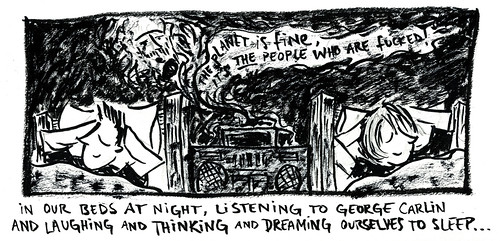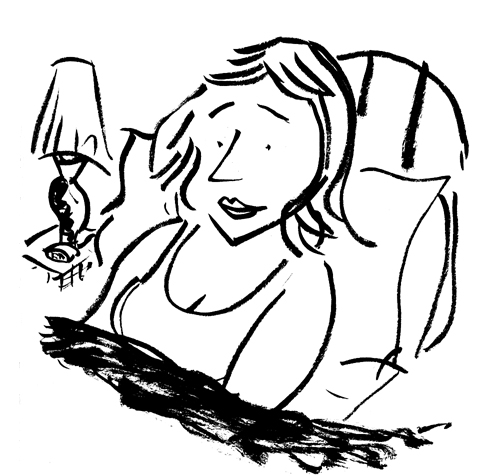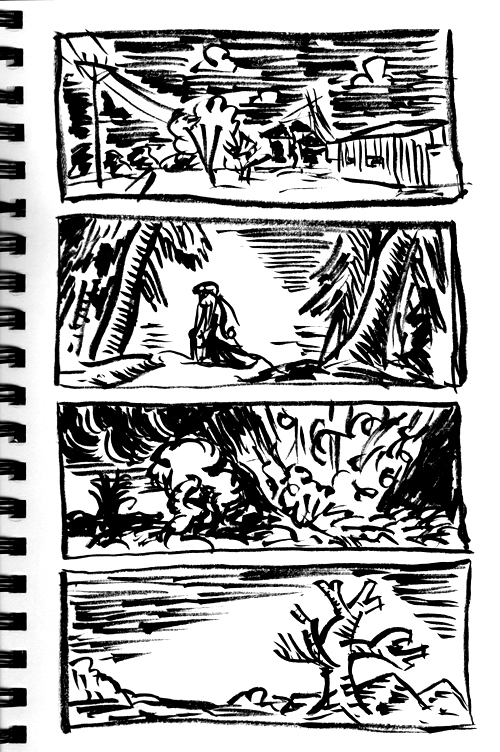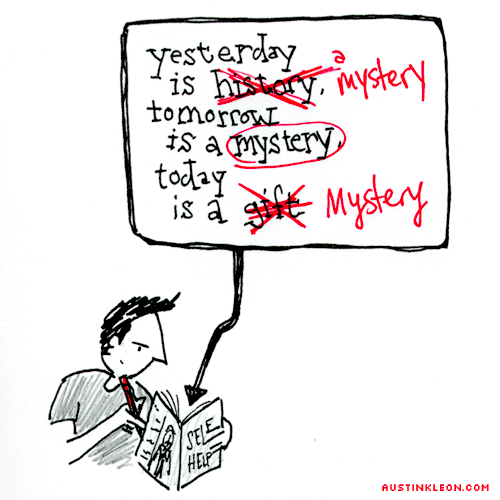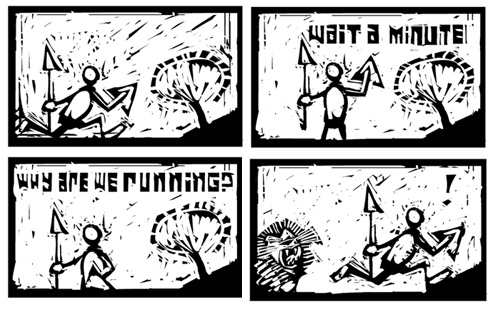When we were teenagers, my best friend and I used to listen to George Carlin cds before we fell asleep. He was our philosopher king.
BRUSHWORK
I prefer to think I’m just a man, not a poet part time, business man the rest….I’m no different from anyone else, just a run of the mine person. I like painting, books, poems. In my younger days I liked girls. But let’s not stress that. I have a wife.— Wallace Stevens
She said there ought to be one place you thought about and knew about and maybe longed for but never did get to see.— Alice Munro, “The Bear Came Over the Mountain”
I just doodle until I find a character; you go with the one that has a certain little spark of life….After that, I really can’t force them to do anything. They know what they want to do if they’re strong characters. And they surprise you! If they want to do something, there’s nothing I can do to stop them.—James Kochalka
At last I do not know how to draw anymore!— Henri De Toulouse-Lautrec (1864-1901) at the end of his life
Some doodles I’ve been doing with a brush and ink.
TWENTY-FIVE
There’s only about 20 birthdays you should be allowed to celebrate. And the others? You’re wasting cake and paper….When you’re 20, you get a birthday. Any time you enter a new set of tens: 20, 30, 40, 50, you get a birthday. 21, you get an awesome birthday. And then, THAT’S IT. A birthday every ten years. “I’m 26!” Great, go to work. Who gives a s***?—Patton Oswalt on when you should get a birthday
To humble us: Things other people accomplished when they were your age.
“Oh, look honey: it’s my Citizen Kane year.”
(My wife rolls her eyes.)
To give us hope: late bloomers.
I’d like the middle path, please…and some cake!
EVER STOP TO ASK WHY?
WHEN WE SWAPPED BRAINS
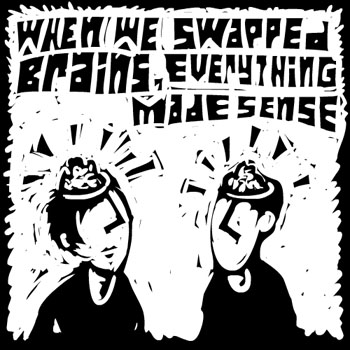
Here’s a little Friday treat: me messing around with video capture and Flickr’s new video features to show what goes into carving a throwaway panel…
- ← Newer posts
- 1
- …
- 38
- 39
- 40
- 41
- 42
- …
- 71
- Older posts→
